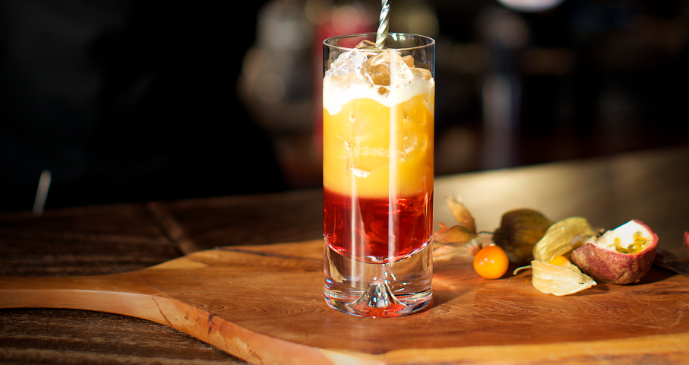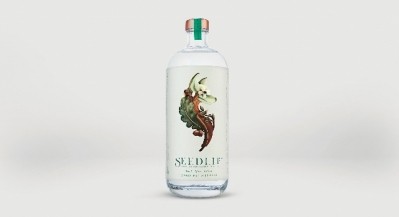In association with Diageo
There’s no excuse for a bad cocktail

It’s uncomfortable watching bar staff squirm when a customer orders a cocktail, then make it badly and deliver it poorly, simply because they don’t have the confidence or skill to do the job properly.
Recently I was challenged by the spirits giant Diageo to complete some of its accredited training courses with bar staff in venues as part of the firm’s Bar Academy initiative – now in its third year and with 7,200 bartenders successfully trained.
Disheartening:
"It’s disheartening when staff at a cocktail-serving venue don’t ooze confidence and passion when practising their craft, which is usually down to poor training"
I know my way around a bar – both in front of and behind – and I like to think I can make a decent cocktail. So it’s disheartening when staff at a cocktail-serving venue don’t ooze confidence and passion when practising their craft, which is usually down to poor training.
The first venue I visited with Diageo, which won’t be named, was a cool set-up, with a bar stocked full of premium and super-premium spirits. There were also some interesting cocktails on the menu. But seeing the bar staff in action didn’t reflect the offer the operation was trying to sell to its customers.
On a ‘secret’ visit ahead of my Bar Academy training session at the venue with Diageo I saw slow, clumsy and nervous bar staff. Customers weren’t being up-sold to and worst of all the cocktails weren’t balanced, didn’t look pristine and sometimes tasted very bad.
Enter Diageo’s on-trade consultant Steve Timpson, who took a session with the staff – and me – a week or so after my ‘secret’ visit. He tells us that spirit drinkers are important to the on-trade for two reasons.
First, higher margins can be gained on spirits – whether served with a mixer or in a cocktail. Second, customers who order spirits at the bar are likely to have up to four drinks. This is compared with beer drinkers who will have three drinks per occasion and wine drinkers who will have just two. So keeping spirit drinkers happy with well-put-together and perfectly-served drinks is a necessity, otherwise you won’t see them spend on a second drink.
The spirit category in pubs is growing, making it a good time for operators to cash in on the segment. CGA Strategy figures show that, in the 12 months to 16 April, spirit sales in pubs rose by £111m. Vodka, speciality drinks, non-cream liqueurs and gin accounted for 59.6% of spirit value sales.
The growth from pubs
The growth in pubs came from vodka (up £33.4m), gin (up £29.5m) and non-cream liqueurs (up £12.5m).
Timpson says to his trainees: “Even with a spirit and a mixer you’re putting a bit of yourself into it and it should be made perfectly. Think about how good coffee is moving forward and how the baristas are putting their own personal spin on things – with designs in the foam on a cappuccino, for instance. That’s the sort of thing customers want.
“If you’re working in a bar, selling premium cocktails confidently and properly, with good garnishes and great customer service, then you will find lots more people buying from you.”
But it’s not just down to the serving skills of the bar staff. As Timpson explains, one in three customers doesn’t know which category they want to drink from when they get to the pub. Bar staff can have a “massive” impact at this stage, he tells us. “From the outside of the pub all the way up to the bar, from point-of-sale to cocktail menus. All of these things can engage people to choose a spirit and a mixer or a cocktail.
“You also need to make sure the back bar is decent and easy for customers to see. A fruit bowl on the back bar helps because it’s a mark of quality and shows you make fresh cocktails with fresh ingredients.”
Such a sign is also going to get customers to part with more money, Timpson points out. For instance, a third of people asked by Diageo said they would buy a premium brand if they received a recommendation from staff, 65% of people would pay more for a premium spirit and more than half (54%) of those asked said they saw premium spirits as a sign of quality. Also, 49% of customers agree they are drinking less, but the drinks they have are of better quality.
A more prominent figure, perhaps, is that 90% of customers will stick with the first type of drink they ordered, so staff have to hook their customers with the best drink from the off.
For Timpson, this can be done by remembering a simple script, which, he says, has helped him win many industry competitions.
Simple conversation
The simple conversation the trainees should have at the bar with customers to get them to buy a certain drink is:
- Have you ever tried (drink)?
- It is (a French vodka made from grapes that’s very smooth)
- It goes great (in a vodka martini)
- Would you like to try it?
Once you’ve got the customer to buy the suggested drink, it then needs to be delivered to a standard that’s above expectations.
For example, when making a simple gin and tonic, staff should start by holding the bottom of the glass. “The bottom is the thickest part, so you’ll know the glass is definitely cool,” Timpson advises us all. “It also means your fingers will be far enough away from the contents and the customer can see the drink being built.
“The glass should be clean, clear, dry and unbroken. It should be filled with ice and the gin should be measured out above it and in front of the customer,” he continues. “Add the tonic and then a lime wedge to the top (without squeezing).
Standard gone wrong:
"It’s a standard drink, but it’s surprising how often it goes wrong: they are served in half-pint glasses, with only a few ice cubes and no garnish"
“It’s a standard drink, but it’s surprising how often it goes wrong: they are served in half-pint glasses, with only a few ice cubes and no garnish. If the drink looks good, then the customer is going to come back for another,” he adds.
When making more complex drinks, such as cocktails, it’s important to know exactly what goes into them by heart, we are told. If you can’t remember everything, prompt cards can be kept under the bar – but that gives away some of the magic. Most importantly, customers must see the drink being made in front of them.
So, after the Bar Academy training session, did the skills improve at the bar? Well, there wasn’t time for another ‘secret’ visit, but while I was there the team certainly appeared inspired. Their cocktail-making skills and confidence had improved as the session went on.
In upcoming issues of The Morning Advertiser I will be writing columns and recording podcasts based on my experiences with Diageo’s Raising the Bar training scheme in venues with staff, so look out for the next one soon.
Correction: The original story in the 25 July issue incorrectly said the training initiative was the Raising the Bar initiative, when in fact it was the Bar Academy initiative.







